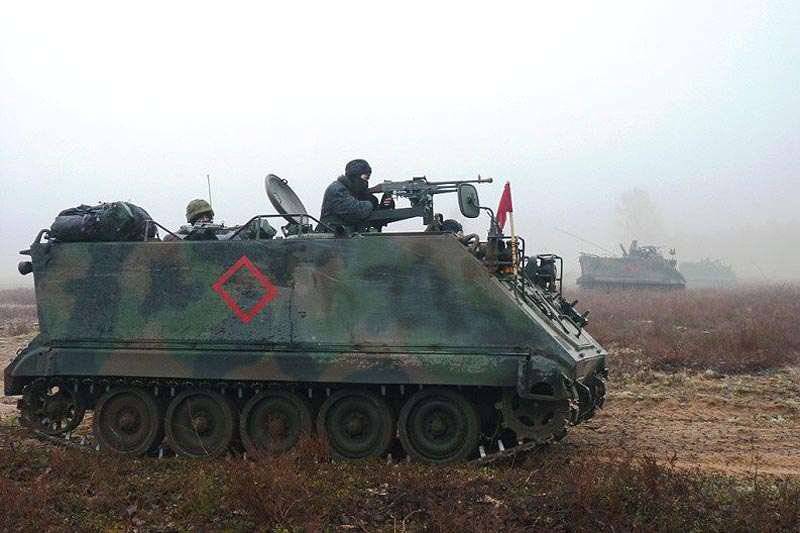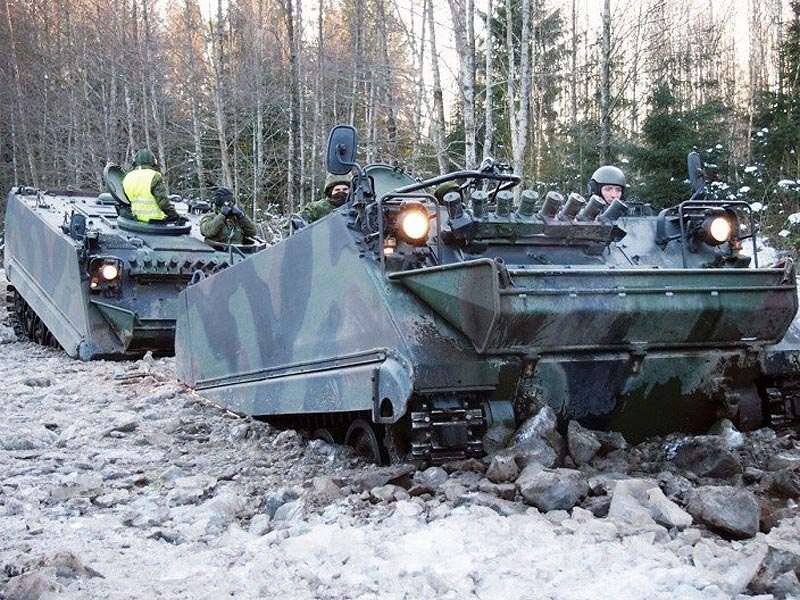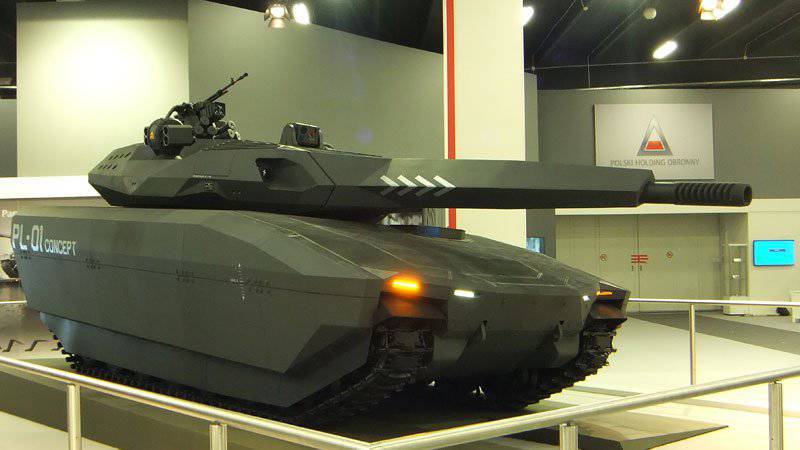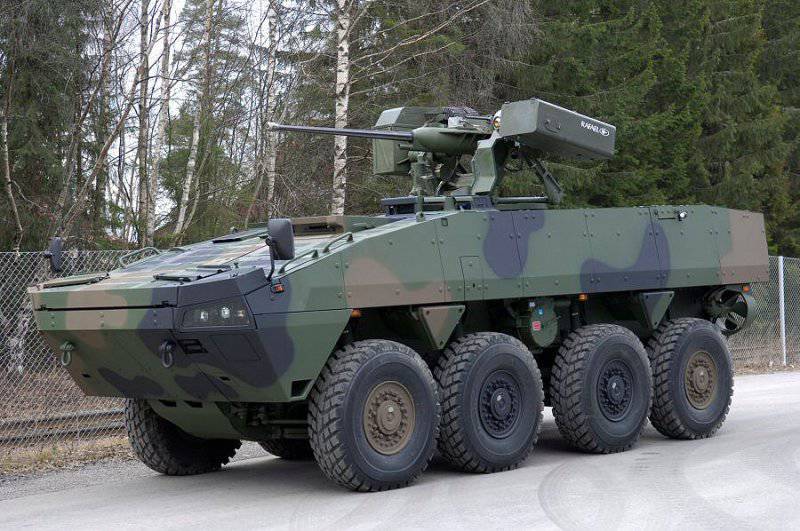Updated momentum. Eastern European countries are upgrading their armored vehicles.


Lithuania is in search of a wheeled BMP 8x8, which could replace the M113 armored personnel carriers, which are in service with two battalions of the army of this country
Eastern European governments have always sought to modernize their fleets of vehicles and get away from the technologies of the Cold War era, but the events in Ukraine have greatly accelerated these processes.
After joining NATO, about 10-15 years ago, most Eastern European countries focused on modernizing their armed forces.
Most of the work aimed at achieving compatibility with NATO standards and carried out for ten years before joining this organization was completed, and therefore, in the light of declining defense budgets, special attention was paid to maintaining the maximum combat capability of their armed forces.
Former members of the Warsaw Pact, the Czech Republic, Hungary and Poland, joined NATO in 1999, and then, in 2004, followed by Bulgaria, Estonia, Lithuania, Latvia, Romania, Slovakia and Slovenia. Although it is too early to talk about the long-term consequences of the Russian intervention in Ukraine, it has already forced Poland to identify short-term threats in its newest national security strategy, approved in November 2014.
Flavio Marchesoni, marketing director at Iveco Defense Vehicles, said that despite friction with Russia, he doubted that the countries of the region intend to spend more on defense assets such as cars, although for Iveco some countries are still “ key markets ”, this is especially true Poland.
“The Poles announced a program for a thousand trucks, but this may change,” he said. - Then it was a request for lightweight universal class cars, but Poland has its own industry with local solutions that are preferred. There is no tender or price request. I see the potential for Iveco, but nothing concrete at the moment. ”
Large spenders
Of the countries of the former Warsaw Pact, Poland has the largest defense expenditures and, in accordance with its modernization plan approved in 2012, for ten years the country plans to spend about 40 billion dollars to upgrade its weapons.
In recent years, the Rosomak wheeled infantry combat vehicle program, the decision on which was made in 2003, has become the largest Polish program in the field of ground weapons. The Polish car is based on the AMV (Armored Modular Vehicle 8x8) armored vehicle developed by Patria, a Finnish company, equipped with passive armor from Rafael.
The cost of the first order for 690 machines AMV XC-360P Rosomak amounted to 1,48 billion dollars. Machines are manufactured in Poland by a local manufacturer WZM (Wojskowe Zakłady Mechaniczne); most Rosomak from this contract has already been delivered. In June, 2014, Poland bought another 34 engineering intelligence machine for 77 million dollars. The second major order for 307 machines was signed in July of the 2013 year, and they will be produced until the 2022 year.
The initial batch consists of: 313 machines in an BMP configuration with a Hitfist 30 combat module from OTO Melara; 125 BTR; 38 repair and recovery vehicles; 22 engineering vehicles; five engineering intelligence vehicles; 41 medical evacuation machines; 17 Intelligence Machines weapons mass destruction; 23 fire support vehicles; and 32 intelligence and operational control vehicles.
It is expected that in the second order there will be approximately 80 machines in the mortar version, on which the mortar will be manufactured by the Polish company Huta Stalowa Wola (HSW). There are also plans to install a remote-controlled combat module with an 30-mm cannon on the two battalion vehicles. In 2006, the battle module competition between Rafael and OTO Melara ended without result. The first of these companies confirmed that it plans to re-apply for a combat module.
Lack of
However, not everything is so simple. The unsuccessful purchase of the combat module also led to the cancellation of the planned upgrade of 2009 machines to the BWP-469 Puma configuration in 1. The contract was originally issued by the Polish company Bumar to develop two prototypes of the BMP-1M, but the characteristics of the Elbit UT-30 and Rafael Samson modules did not meet the requirements.
But, since the needs of the wheeled vehicle are currently fully met by the Rosomak project, the emphasis is on upgrading the tracked capabilities. Plans include acquiring a tracked armored vehicle family through the Universal Modular Tracked Platform (UMTP) program.
It includes a DSN (Direct Support Vehicle) vehicle weighing 35 tons, which will replace the T-72 tank, and a lighter infantry fighting vehicle, which will replace the BMP-1. Chris Nunn, responsible for the countries of Central and Eastern Europe at BAE Systems, said that there are about 1200-1400 of such machines that need to be replaced, although it is unlikely that the replacement will take place on a one-to-one basis.
Up to 350 machines worth a billion dollars worth of 2,5 machines can be purchased; plans to get a finished prototype for the 2016 year and start production in 2018-2022's.
In order to compete for DSV requirements, BAE Systems and Polish companies Bumar and Obrum showed a demo sample under the designation PL-2013 at MSPO 01. It is based on the casing of the light tracked CV90120 Armadillo from BAE.
Noting that there were two reasons for creating PL-01, Nunn said: “Firstly, we would like to see Poland’s desire to develop its industrial base and we would like to show that we have done this in many other countries, working with local industry, transferring technology . We have expanded opportunities, deepened cooperation with the local community and, in my opinion, we have achieved results. We made a conceptual machine in a very short time, which the Poles could evaluate and move forward. ”
“The second reason is that we see here the potential of a major contract on BMP and DSV. We wanted to show that BAE Systems has a modern advanced technology that we could offer Poland as a solution that will satisfy these needs. ”
Suitable protection
Nunn believes that a floating machine is suitable for Poland, since this could mean a reduced level of protection - the predominance of IEDs in Iraq and Afghanistan highlighted its importance. The company has upgraded its CV90 to the latest Armadillo standard to meet these requirements and has provided recent sales of this model to Norway.
“We would like to cooperate with the Polish industry, no matter how the government instructed them to work with it, to transfer the proven capabilities in battles to Poland, to produce and improve them in order to meet local needs,” he continued. “The Polish version will be called CV90-Plus or Armadillo-Plus.”
Other interested companies include KMW, Nexter, PSM, Rheinmetall, Saab and Thales, but the program is currently stopped as long as Poland complies with EU procurement and offset rules for the program.
The Ministry of Defense is currently reviewing the norms and how they correlate with the local industry, in particular with the state holding Polish Armaments Group. Meanwhile, the industry is waiting for whether Poland will develop its decision or put it up for competition, and what rules and regulations will be applied in this case.
The decision of the Ministry of Defense is expected until the middle of 2015, which will result in a year and a half shift in the program as a whole. The army is concerned about this because it wants to get its weapons as soon as possible.

BAE Systems has teamed up with Polish Bumar and Obrum to produce a PL-01 demonstration vehicle as a possible contender for a Polish program on a direct fire support vehicle Direct Support Vehicle
Heavy machinery
In October 2013, Poland also announced a tender for the modernization of 128 tanks Leopard 2A4 to the new PL standard by 2019 under a program worth up to $ 480 million. In addition, under a contract worth $ 250 million, she received her first 11 of 105 Leopard 2A5 tanks purchased from stocks of the German army.
Poland is also upgrading around X-NUMX T-20M72 tanks in accordance with a contract worth 1 million dollars with WZM, as well as 10 tanks PT-40M with 91-mm smooth-bore gun under a contract with 120 million dollars concluded with Bumar. She also wants to replace her floating reconnaissance vehicles BRDM-30 2x4 with a new car 4x4 or 4x6 as part of its LOTR program (Light Armored Reconnaissance Vehicle - light armored reconnaissance vehicle). As part of the LOTR program, AMZ-Kutno supplied a prototype 6x4, named Bobr; The company also manufactured a floating BN 4x8, called Hipopotam, which could replace the WZM-8 5xXNNXX car.
HSW is also responsible for the delivery of eight self-propelled 155 tracked Krab howitzers worth 100 million dollars. Expected before 48 guns, but it is not clear whether additional orders have been placed.
There is also a need for self-propelled wheeled artillery, and although HSW teamed up with Nexter to offer Caesar ACS back in 2010, it appears that HSW was replayed and teamed up with the Israeli Elbit to introduce an Autonomous 155 system based on Auth Truck Mounted Howitzer System (ATMOS) 2000 produced by Elbit.
The United States provided Poland with a rental of 20 machines with enhanced MaxxPro Dash MRAP protection from Navistar Defense along with a Cougar MRAP for operations in Afghanistan.
Poland is also considering the purchase of new 81-mm mortar complexes through the NATO Supply Agency in order to bring this type of weapons to the same standard with the alliance.
On defense less
Meanwhile, in the Czech Republic, defense expenditures were steadily declining, although Prague modernized its equipment after engaging in operations in Afghanistan under the command of international security assistance forces. The country first bought LMVs from Iveco and Dingo 2 from German KMW, but increased the order of the first model in 2009 and 2010. In 2013, Iveco completed the supply of 120 LMV machines with a total value of 260 million dollars.
Czechs are interested in variants of the intelligence of an OMP armored car LMV, Iveco delivered the first prototype in 2014. However, Marchesoni noticed that more 10, 15 or 20 machines could be bought, but no more.
Nunn said that the Czech Republic "definitely has a need to replace its BMP-2" and the publication of the request for proposals is expected in the 2017-2018 years. “I would suggest that they would look for more mobility and protection rather than amphibious characteristics, since the Czechs saw the advantage in having better protection than amphibious characteristics, that is, they wondered how often we use these capabilities?” - he added.
As for heavy armored vehicles, although the Czech Republic upgraded the 30 T-72M1 tanks to the CZ version by installing new DICOM communication systems, the Selex ES fire control system and the Perkins engine with an Allison transmission, the rest were written off.
The country has announced a competition for five armored repair and recovery vehicles to support the 107 machines Pandur II 8x8 from General Dynamics Steyr of the Czech Army and wants to get another 30 8x8 operational management platform. Rafael supplied 99 combat modules for the Pandur II and four Samson RWS modules, plus passive armor.
On several machines GDELS-Steyr Pandur II 8x8 of the Czech army installed combat modules Rafael Samson RWS
Future power
Looking at the future, the Czech army will need to upgrade its artillery, including the 122-mm rocket launcher system (MLRS) Tatra 813 RM-70 and the refinement of the Dana 152-mm howitzer for firing NATO-standard 155-mm ammunition. Anti-aircraft weapons also require attention, including the 2K12 Cube (SA-6) system.
The position of Slovakia is very similar to the position of the Czech Republic. More than ten years ago, the Slovak army upgraded the RMZO-70 MLRS, but still needs to upgrade the Zuzana 155-mm self-propelled howitzer.
With limited funding, the selection of only a few types of weapons for upgrading or replacing, as well as increasing the level of interaction with NATO are current procurement priorities. Unfortunately, there is still a lot of work to be done.
Slovakia bought ten LMVs from Iveco in the 2010 year as the initial step of replacing the BRDM machines, but lightly armored vehicles will also be needed to complete this process. A contract has been signed for 40 LMV vehicles, which have not yet been delivered. The army also needs to replace its own BMP-1 and BMP-2, as well as the BVP-2 vehicle with a light-wheeled armored vehicle 8xXNNUMX.
In addition, the country is interested in buying Czech small arms caliber 5,56x45 mm, such as the CZ 805 Bren assault rifle, as well as other infantry weapons.
Marchesoni said that although many European countries abandoned their local production requirements because of the high cost of organizing and maintaining industry, companies still have to compete with donated or cheap used cars from the US, such as MRAP machines sold as part of the sales program to foreign countries . Regarding some procurement programs, he noted: “At the last moment they can donate equipment or sell it as part of a sales program to foreign countries, but it may not meet the requirements. But the gift is a gift. ”
Timely conversion
In the Baltic states, the process of bringing local military standards to NATO standards was not so extensive, since the work on compatibility of the armed forces began even before they joined the alliance, and therefore the emphasis was on modernization.
In Estonia, the local press wrote that the military wanted to buy the former Dutch CV90NL vehicles, moreover, after the Russian attack on Georgia, there were plans to purchase protected vehicles and even AMX-30 tanks from France. However, none of them was carried out, although the Russian intervention in Ukraine may still accelerate them.
Latvia bought from the UK from the military surplus 120 reconnaissance combat vehicles CV (T) for the sum of 96,2 million dollars, which will be delivered in 2016 year. Since this is an intergovernmental agreement, BAE Systems stated that it is unclear in what condition the machines will be supplied and that any modernization work will be required of it, as it is a manufacturer of original equipment. Rafael has applied for the supply of its 30-mm OAK for machines in Lithuania and Latvia.
Meanwhile, Lithuania seeks to get a new 8x8 machine. Marchesoni said that Iveco filed an application and that it is “the largest program announced in Europe”. A request for proposals has been issued and is currently awaiting the selection of two or three preferred applicants.
Aim point
“This is really one of the programs we are aiming at, especially the latest developments that we have carried out in our products of the Centauro family in cooperation with OTO Melara, as well as the new floating machine 8x8 SuperAV. We are promoting cars to these countries, but we still have to wait, since there are no operating programs other than Lithuania. ”
At the system level, Rafael exported Spike ATGM to Latvia, the Czech Republic, Poland and Romania. A company spokesman said that the 180 OWS-25 DBMS were sold to Romania and half of them were finalized to install the Spike ATGM.
“Some of these countries have shown interest in our Trophy HV / LV system, there are several countries in the region that have shown interest in our Spyder air defense system,” he said, adding that technology was transferred to the local production of Spike missiles in Poland through company Mesko.
Lithuanian priorities
Director of Management at the Lithuanian Ministry of Defense, Coldrius Uzkuraltis, said that the current top priorities for the military are firepower, maneuverability and survivability.
Under the main arms procurement program, it is planned to acquire new 8x8 infantry fighting vehicles. “These deliveries will last a little longer, we are still not sure whether we will sign the contract next year, but we are looking for at least a variant of the BMP to replace the two battalions with the M113 armored personnel carrier,” he said.
“Firstly, we look at the wheeled armored personnel carrier, we change the tracks to wheels, which should give an increase in protection by at least a third and at least a 30-mm cannon. At present, we have issued a request for proposals to ten companies and have already received an answer from eight, some may supply an armored troop-carrier, and some offer towers for installation. ”
Uzkuraltis continued: “We are currently exploring the market and should release our final configuration by the end of the year, and begin the negotiation process next year in order to select a manufacturer. We look forward to 100 units that fully meet the needs of the two battalions. ”
In order to increase firepower, Lithuania wants to increase the range of artillery systems from 20 km to 40 km, as well as to purchase medium-range anti-tank missiles and portable air defense systems. Uzkuraltis said that the country does not want to have specific systems, but wants to replace its missile systems with self-propelled artillery. But this is just as an option.
“According to our schedule, the program should start in 2017-2018, but we are still in the process of discussion and are considering various options that will be chosen later.”
In order to increase the capabilities of its air defense system, Lithuania has already signed a contract for 34 million euros for the purchase of 120 MANPADS Thunder. The first shipments have already begun and should be completed by 2021. Also, the country is armed with Javelin MANPADS from 2001 of the year, and in 2014 it updated the contract for the same number of systems, the deliveries of which must be completed by the end of 2015.
Touching infantry units, Uzkuraltis noted that Vilnius wants to buy rifles, pistols, machine guns, grenade launchers, modernize 120-mm mortars and purchase new 81-mm mortars. In order to increase the survivability of soldiers, protective equipment, such as helmets and body armor, will be purchased.
A contract was signed for 300 rifles SCAR-H from the company FN Herstal, their deliveries are completed. The Ministry of Defense is counting on an additional number of these rifles, as well as on the purchase of large-caliber sniper rifles.
The Israeli company Elbit Systems is also modernizing 30 Lithuanian 120-mm mortars installed on the M113 BTR. However, with regard to 81-mm mortars, the Ministry of Defense intends to launch a new program on them in 2015.
The Department of Defense also plans to increase its spending. In 2015, the share of GDP allocated to defense will increase to 1,11%; up to 1,29% in 2016; up to 1,47% in 2017; up to 1,64% in 2018; up to 1,82% in 2019; and finally 2% in the 2020 year.
“If we take a look at our investment, then next year we will spend millions of dollars more on 50 than in the past, and we also had growth this year,” concluded Uzkuraltis.
Materials used:
www.shephardmedia.com
www.patria.fi
www.obrum.gliwice.pl
www.iveco.com

Information